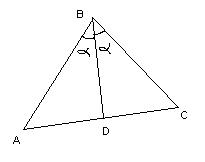I just started tutoring and my student is quite inquisitive. For example, he likes to ask what's the use of learning this math concept etc. I find this very encouraging, and I would like to share some application of the topics. But somehow, it's not as easy as I thought.
Take for instance, today I was going through functions. He asks me, so what's the use of learning inverse functions? I was quite stumped for a moment. Obviously, all these things are very important and apply to all sorts of situations. But to think up of one on the spot can be a daunting task.
But later on I realise I've been thinking in the wrong direction. Each concept has its purpose and applies to many areas of our lives. But not every concept can be substatiated by giving a real life example. Most math concepts are more likely to be used as a tool, or rather, a tool of a tool, to approach a problem. For instance, learning about what are injective functions or surjective functions seem rather meaningless for a first-time learner, but it is important in the study of graphs. For instance, we use such properties to interept the behaviour of a graph. And graphs are important in empirical data in many fields of study: be it in physical sciences, economics, engineering, statistics etc.
So that is what I mean by somethings being a tool of a tool. Concepts that seem to be meaningless are actually the foundation to build our "weapons" to handle real life problems. If weapons are indeed used to handle problems, then mathematical concepts we learn from 'O' and 'A' levels serve as the parts of a bullet.
However, I do lament that not enough real life examples are given to students to cultivate their interest in maths. Indeed, there are areas where applications immediately follow theory. For example, any student who has learnt differentiation knows how it applies to optimization problems. But there are many other areas left unexplored. For instance, how does complex numbers apply to real life situations?
If I put myself in a teacher's shoe, I do understand the predicament. It is often difficult to talk about an application without going in-depth into other fields. In other words, one would be inviting alot of "bombastic" terms and terminology in order to discuss an application. Alternatively, one can always just remark that such a concept is applied in a specific area of engineering say, but no one will truly be satisfied with this answer.
I still feel optimistic since the world is so vast, surely it is possible to collect some solid yet simple (to understand) examples to present to our students. Maybe in the event that it is truly difficult to find a simple example, it is best to quote a area of study as above, and guide the student in the right direction to find out more about it himself.
Perhaps it is due to my ignorance that I have not come across any good example of how complex numbers are used to real life. The example I used is geometry. I explained to my student about geometry and transformations. Then I compared cartesian geometry and looking at the same shape on a Argand Diagram. By comparison, and by applying some of the concepts he learnt earlier, he was astonished to see that transformations can be done so easily on the argand diagram, just by mere multiplication of a complex number to the orignal function. And I left it to his imagination in what disciplines such knowledge would be important.
If anyone has any good examples in any area of mathematics that we learn in 'O'/'A' level, please share with me. I would like to accumulate a wealth of information to help other teachers as well. Ultimately, the students will benefit the most.




